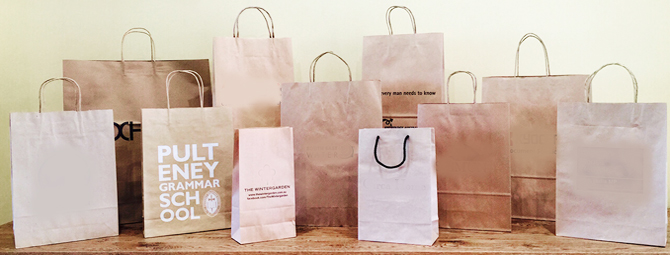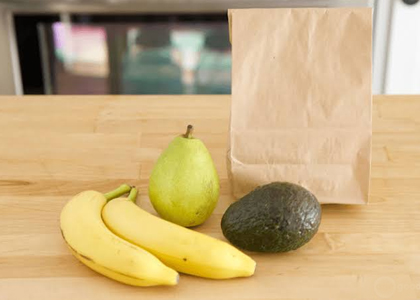Introduction

The Rise of Eco-Consciousness
In recent years, the spotlight has shifted onto environmental stewardship. Consumers and businesses alike are embracing eco-friendliness, seeking sustainable solutions to daily challenges. This upsurge in green awareness has sparked a revolution in packaging, with a keen focus on reducing waste and pollution.
Paper Bags as an Alternative
Amidst the quest for sustainable packaging, paper bags have emerged as a frontrunner. As a substitute for the ubiquitous plastic bag, they offer a seemingly eco-friendly alternative. Why the sudden preference? Paper bags are perceived as the champions of eco-packaging, leveraging the renewable nature of paper and its biodegradable properties. But, as with any choice, there are nuances to consider. Are paper bags truly the panacea for our environmental concerns, or do they come with their own set of challenges? Let's delve into the pros and cons of this eco-packaging option.
Understanding Paper Bags

What Are Paper Bags?
Paper bags are a versatile form of packaging made from sheets of paper. Commonly used for shopping, these bags come in various sizes and designs. They are reusable and often seen as a greener option compared to plastic.
Common Uses
From grocery stores to boutiques, paper bags carry a wide array of goods. They are staples in retail, offering customers a convenient way to transport purchases. Their simple yet sturdy design makes them suitable for various items.
The Paper Bag Industry
The manufacturing process of paper bags involves several steps: pulping, molding, and drying. The industry sources paper from trees, emphasizing the need for sustainable forestry practices. The process is energy-intensive, which raises questions about its overall eco-friendliness.
Sustainable Practices
To ensure sustainability, the paper bag industry must adhere to strict guidelines. This includes using recycled materials where possible and minimizing the use of harmful chemicals in production. Certification programs like the Forest Stewardship Council (FSC) help verify these practices.
The Debate
While paper bags are biodegradable, their production can lead to deforestation if not managed responsibly. The debate revolves around balancing their environmental benefits with the resources needed for their creation.
Advantages of Paper Bags
Environmental Benefits
Biodegradability
Paper bags are designed to decompose. This natural process takes about a month, a stark contrast to the centuries it takes plastic to degrade. As they break down, they release fewer toxins, easing the pressure on landfills and marine ecosystems.
Renewable Resource
Paper bags are crafted from trees, a renewable resource. Sustainable forestry ensures a steady supply of raw materials. Certified paper products guarantee that trees are replanted, supporting a cycle of growth and harvest.
Practical Uses
Durability
Durable paper bags can carry more than just groceries. Heavy-duty options are available, boasting a high weight capacity. These bags can withstand daily wear and tear, making them reliable for various uses.
Safety
When it comes to safety, paper bags present less risk. Unlike plastic, they are less likely to cause suffocation hazards. This makes them a safer choice, especially in households with children or pets.
Marketing and Branding

Visual Appeal
The look of paper bags can be quite charming. Their simple design pairs well with branding efforts. The tactile nature of paper enhances the perception of quality, adding a touch of elegance to any product.
Brand Promotion
Customized paper bags are a walking billboard. With a company's logo and colors, they serve as mobile billboards. Strategically used, they can significantly boost brand recognition and customer loyalty.
Disadvantages of Paper Bags
Production Concerns
Resource Intensive
Producing paper bags demands substantial resources. Water and energy are heavily utilized, which might seem counterintuitive for an eco-friendly option. The manufacturing process leaves a significant environmental footprint.
Deforestation
The raw material, paper, primarily comes from trees. Excessive production can lead to deforestation, disrupting ecosystems and habitats. Sustainable practices are crucial to mitigate this impact.
Durability and Practicality
Not Waterproof
A key drawback is paper bags' susceptibility to water. Wet conditions render them ineffective, limiting their usability in various scenarios. This is a notable disadvantage compared to the resilience of plastic.
Limited Reusability
While reusable, paper bags' reusability is not infinite. Compared to cloth or canvas bags, they wear out faster. Their fragility in the face of moisture and heavy loads reduces their practicality.
Economic Factors
Cost
Paper bags tend to be more expensive than plastic. Manufacturing costs, including the resources used, contribute to the higher price. Consumers might find this a deterrent when considering eco-friendly options.
Storage and Weight
Storing paper bags requires more space due to their bulkiness. Weight considerations also come into play, especially for businesses needing them in bulk.
In weighing the disadvantages, it's essential to consider the broader picture. While paper bags present environmental and economic challenges, innovations and sustainable practices can address these concerns. The goal is to find a balance where the benefits outweigh the drawbacks, fostering a truly eco-friendly packaging solution.
Sustainable Alternatives and the Future of Paper Bags

Redesign and Innovation
Innovations are redefining paper bag durability. Research focuses on enhancing their strength and water-resistance. New materials, such as recycled paper and bioplastics, are being integrated to improve sustainability without compromising usability.
Consumer Behavior
Consumers hold the power to influence market trends. Demand for eco-friendly products is on the rise. By choosing paper bags, consumers encourage businesses to adopt sustainable practices. Educating consumers about proper disposal and reuse can further promote sustainability.
Legislation and Bans
Governments worldwide are enacting legislation to curb environmental damage. Some have imposed bans on single-use plastics, advocating for paper bags as a substitute. However, not all policies are favorable. Some regions tax paper bags to encourage even more sustainable options like cloth bags.
The future of paper bags lies in striking a balance. Sustainability is key, but so are practicality and affordability. As we innovate and rethink our consumption habits, paper bags can continue to be a part of the eco-friendly packaging landscape. The journey towards a greener future is ongoing, and paper bags are an important part of the conversation.
Conclusion
The Importance of Eco-Friendly Choices
Going green matters. Sustainable packaging is no longer a choice but a necessity. Eco-friendly choices like paper bags help reduce our environmental footprint. Each decision counts, from consumers to businesses.
The Role of Paper Bags
Paper bags show promise. They are renewable and biodegradable. Yet, challenges remain. Durability and cost are key hurdles. The future hinges on innovation and consumer behavior.
In conclusion, paper bags are a step towards eco-friendly packaging. With improvements and sensible use, they can play a crucial role. The journey to sustainable packaging is ongoing, and paper bags are part of the solution. Let's embrace the potential and address the challenges head-on.














